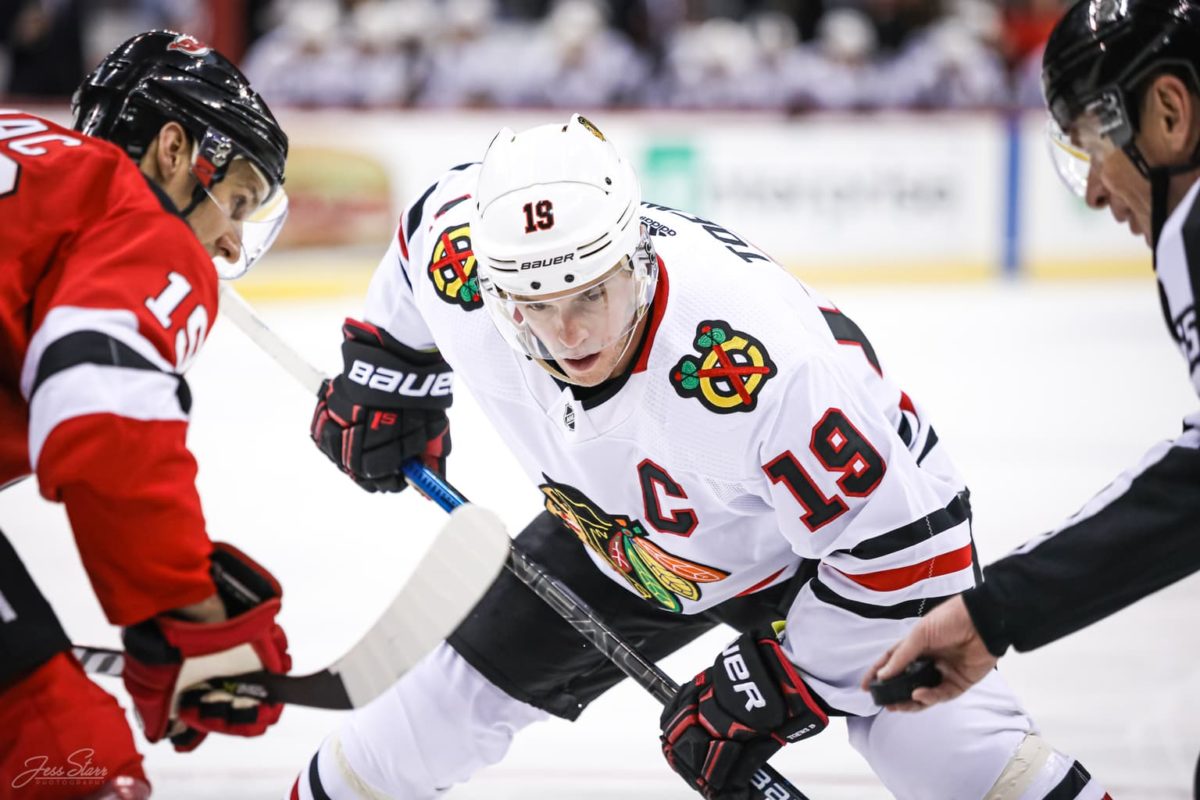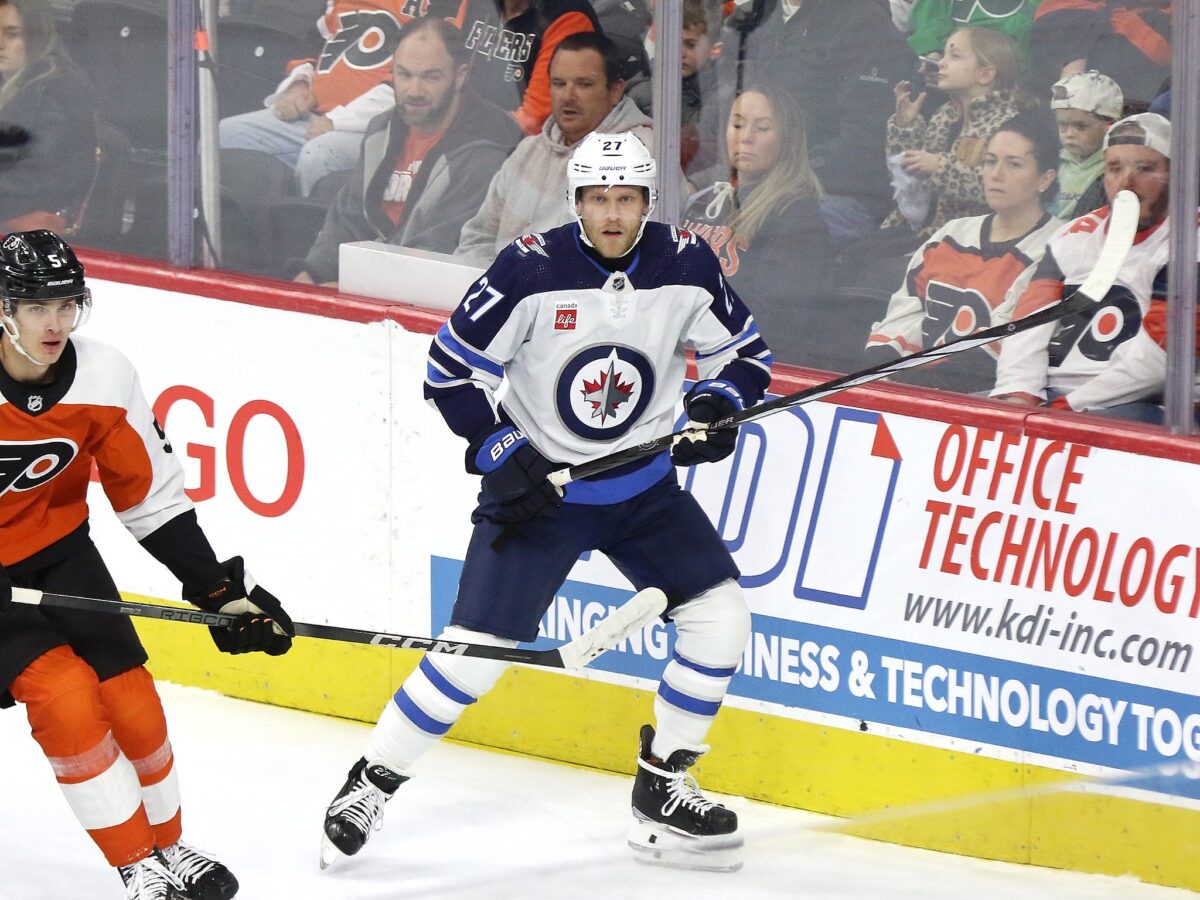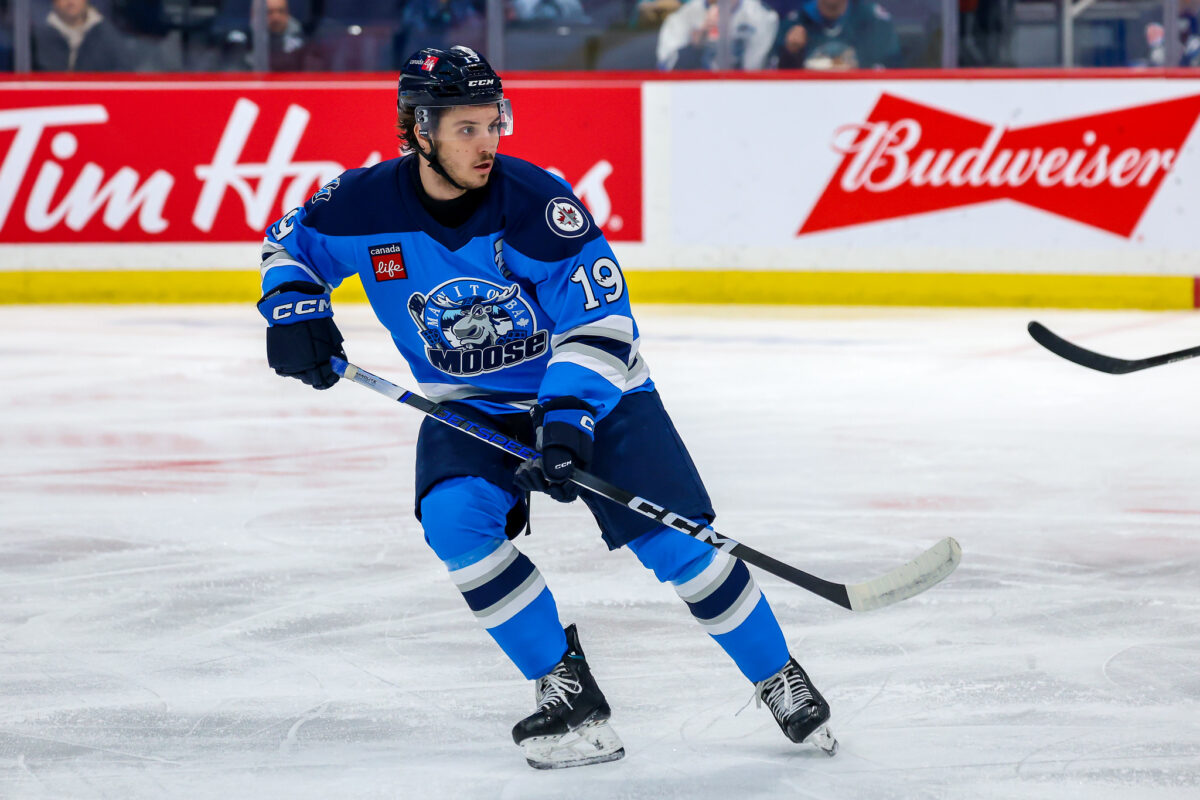After their Presidents’ Trophy–winning 2024–25 season, the Winnipeg Jets were never going to have a quiet summer. The challenge was retooling without losing the core identity that made them so successful. General manager Kevin Cheveldayoff spent the offseason walking a fine line.
Related: Jets Top 10 Prospects For 2025-26
How do the Jets build a team that competes hard in the now? At the same time, how do they get the key pieces that will help the team be a winner in the future? First, the Jets have had to keep essential pieces in place. Second, they have said goodbye to familiar faces. And, third, they have had to make calculated bets on both veterans and emerging talent.
At the center of it all is a blend of three elements — experience, contract stability, and youth — that will define the Jets’ success heading into the 2025–26 season.
A Hometown Return: Toews Laces His Skates in Winnipeg
A year ago, few would have predicted that Jonathan Toews would be back in the NHL, let alone wearing a Jets jersey. After two years away from the game due to health concerns, the 37-year-old Stanley Cup champion is returning on a one-year deal with his hometown team.

This isn’t about nostalgia. Winnipeg is betting on Toews’s leadership and professionalism to help bridge the gap while captain Adam Lowry recovers from hip surgery. Nobody expects him to be the 70-point player of his prime. Still, his voice in the room, his ability to steady a line, and his championship pedigree all have value, especially for a team intent on staying at the top of the standings.
The Jets Have Secured the Core: Extensions for Vilardi and Samberg
Cheveldayoff’s priority was to keep as many key restricted free agents in the fold as he could. He then re-signed Gabriel Vilardi to a six-year extension at a $7.5 million AAV. That long-term commitment signals the Jets’ confidence in Vilardi’s ability to continue growing. His combination of size, skill, and steady production makes him a foundational piece for the Jets’ offence.
Related: What’s Holding Canadian NHL Teams Back from Stanley Cup Glory?
On the blue line, the organization then re-signed Dylan Samberg to a three-year deal worth $5.75 million annually. The negotiation was as straightforward as it comes, and there was no hint of drama. That move signalled the team’s decisive vote of confidence in a young defenseman who has steadily improved since joining the NHL. The Jets believe there’s more to come.
A Cost to Change: Saying Goodbye to Ehlers, Appleton, and Tanev
Not every offseason decision is painless. Nikolaj Ehlers’ departure to the Carolina Hurricanes was perhaps the toughest pill for Jets fans to swallow. A homegrown talent who developed in Winnipeg’s system, Ehlers brought speed, creativity, and a reliable scoring touch. No doubt, he will be missed.

(Amy Irvin / The Hockey Writers)
Mason Appleton (Detroit Red Wings) and Brandon Tanev (Utah Mammoth) also moved on in free agency. To offset those losses, the Jets brought in Gustav Nyquist and Tanner Pearson. Both veteran forwards bring versatility and experience, even if they don’t replicate Ehlers’s offensive output.
The Jets Youth Push: Chibrikov, Lambert, and Salomonsson
One of the most intriguing storylines heading into training camp is the opportunity for younger players to crack the roster. Nikita Chibrikov received a brief look in the NHL last season and, now at 22, will attempt to prove he can handle a full-time role. Meanwhile, Brad Lambert, the 2022 first-round pick, has plenty of skill but needs to demonstrate greater consistency after a disappointing year in the American Hockey League (AHL). On the blue line, Elias Salomonsson is coming off an All-Star season in the minors and possesses the size and poise necessary to challenge for a defensive spot immediately.
Related: Jets’ Evolving Blueprint Shows Intelligence and Restraint
None of these youngsters will be handed a position, but with a few forward and defence openings, the opportunity is real.
Walking the Tightrope: Compete Now, Develop for Later
The Jets’ offseason strategy makes one thing clear: they’re not tearing anything down. This is a “compete now” team that’s also keeping an eye on the future. The goal is to integrate veterans like Toews and Nyquist without blocking the path for Chibrikov, Lambert, or Salomonsson.

That balancing act will require flexibility. If the younger players push hard in camp, they could earn key roles. If they struggle, Winnipeg has enough established depth to maintain its competitive edge early in the season.
The Presidents’ Trophy is a nice marker of success, but the Jets know their real goal lies in the spring. The key to getting there again — and going deeper into the playoffs — will be managing this blend of experience, stability, and emerging skill.
Related: Winnipeg Jets Jersey History
Toews’s leadership could become valuable in a tight playoff series. Vilardi and Samberg’s new deals give the Jets cost certainty and a locked-in core. The young talent offers upside and fresh energy. Put together, it’s a roster built to contend now while preparing for what comes next. The runway is clear. The engines are warming up. The question is whether the Jets can take off again — and fly even further this time.
[Note: I’d like to thank Brent Bradford (PhD) for his help co-authoring this post. His profile can be found at www.linkedin.com/in/brent-bradford-phd-3a10022a9]